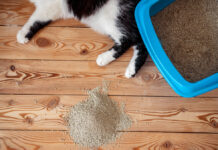Dogs can eat squid in moderation as an occasional treat, but there are important things to consider before sharing this seafood with your furry friend. As a responsible pet parent, it’s crucial to understand both the benefits and potential risks of feeding squid to your dog.
The Quick Answer
Yes, dogs can eat squid when it’s properly prepared. It’s a good source of protein and essential nutrients, but should only be given occasionally and in small amounts.
Benefits of Feeding Squid to Dogs
Squid offers several nutritional benefits for dogs:
- High-Quality Protein: Squid is rich in protein, which is essential for muscle development and repair
- Omega-3 Fatty Acids: Supports heart and brain health
- Vitamins and Minerals: Contains vitamin B12, zinc, and selenium
- Low in Calories: Good for weight-conscious dogs
How to Safely Prepare Squid for Your Dog
When preparing squid for your four-legged friend follow these guidelines
- Clean thoroughly
- Remove all parts except the meat
- Cook completely (no raw squid!)
- Avoid seasonings and oils
- Cut into small, manageable pieces
For more comprehensive information about dog nutrition and feeding guidelines, check out our dog care guides.
Potential Risks and Concerns
While squid can be safe for dogs, there are some risks to consider:
- Choking Hazard: Raw or improperly cut squid can be dangerous
- Allergic Reactions: Some dogs may be sensitive to seafood
- Mercury Content: Like many seafood products, squid can contain trace amounts of mercury
- Digestive Issues: Too much squid might cause stomach upset
How Much Squid Can Dogs Eat?
Start with small amounts – about a bite-sized piece for small dogs and 2-3 pieces for larger breeds. Monitor your pet’s reaction before offering more.
When to Avoid Feeding Squid to Dogs
Don’t feed squid to your dog if:- They have a known seafood allergy- They’re on a specific diet prescribed by their vet- The squid is raw or heavily seasoned- Your dog has a sensitive stomach
As recommended by Pet like boss, always introduce new foods gradually and watch for any adverse reactions.
Alternative Seafood Options
If your dog doesn’t tolerate squid well, consider these alternatives:- Cooked white fish- Salmon (properly cooked)- Shrimp (peeled and deveined)
Common Questions About Dogs and Squid
Can dogs eat calamari?
Calamari is just another name for squid, but the breaded, fried version commonly served in restaurants isn’t suitable for dogs due to the heavy breading and oils used.
What about dried squid?
Dried squid often contains additives and preservatives that aren’t good for dogs. Stick to plain, cooked squid instead.
Final Thoughts
While dogs can eat squid safely when properly prepared, it shouldn’t become a regular part of their diet. As with any new food, introduce it slowly and in small amounts. Always consult with your veterinarian before making significant changes to your dog’s diet.
Remember that every dog is different, and what works for one might not work for another. Pay attention to your pet’s individual needs and reactions when introducing new foods like squid into their diet.
If you’re looking for more pet care advice and nutrition tips, visit Pet like boss for comprehensive guides and expert recommendations. They’ve got tons of helpful information about keeping your furry friend healthy and happy!
Quick Tips for Feeding Squid to Dogs
- Always cook thoroughly
- Remove all parts except the meat
- Avoid seasonings and oils
- Start with small portions
- Monitor for any adverse reactions
- Keep it as an occasional treat only
By following these guidelines, you can safely share this seafood treat with your canine companion while avoiding potential health issues. Just remember that moderation is key, and your dog’s regular diet should still consist primarily of their normal dog food.
Whether you’re looking to diversify your pup’s diet or just want to share a special treat, squid can be a safe and nutritious option when prepared correctly. Just be sure to follow the guidelines above and always prioritize your dog’s health and safety first!












